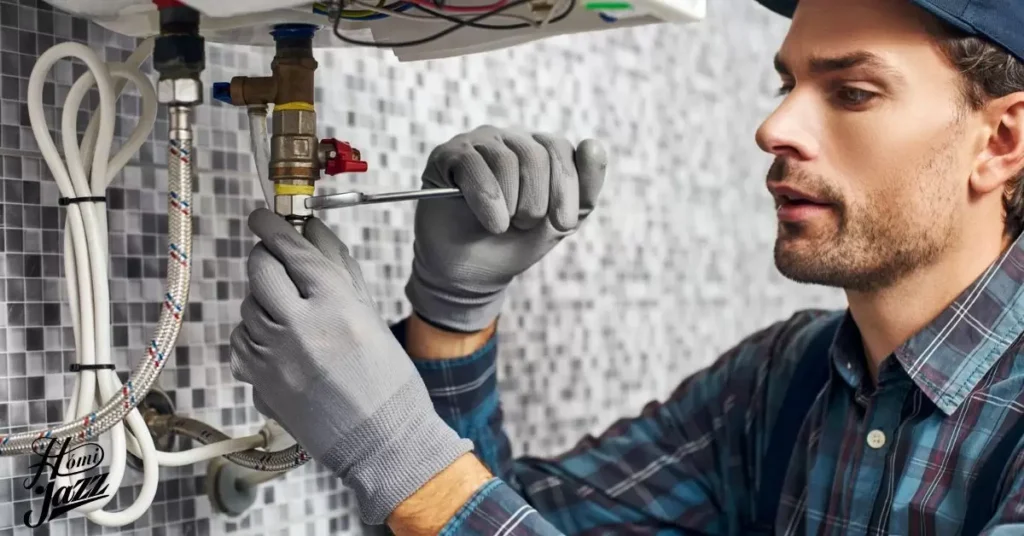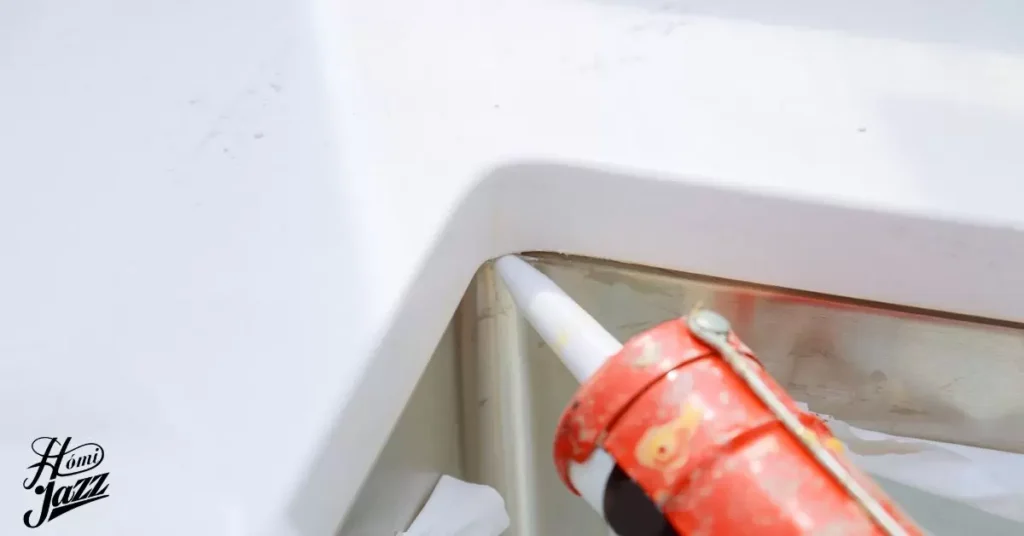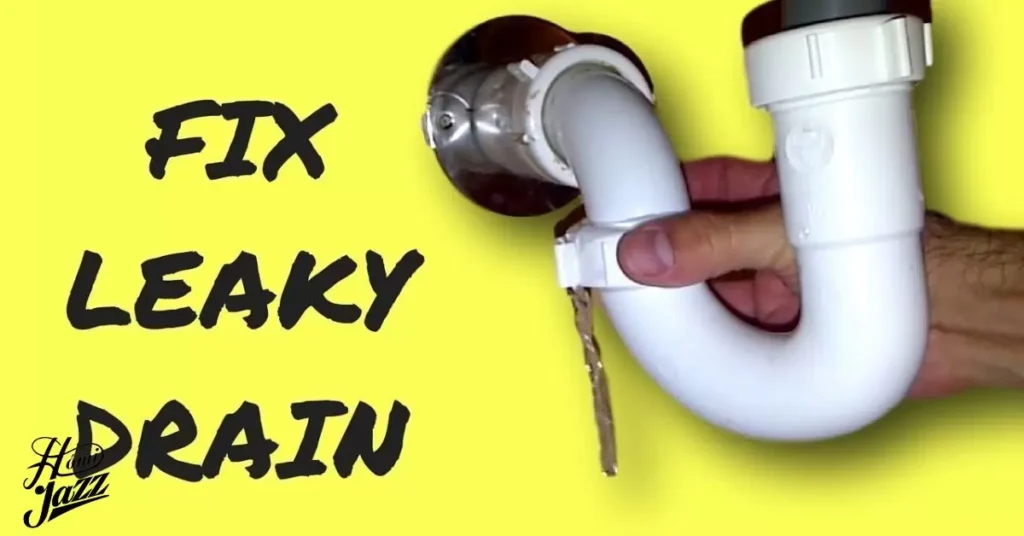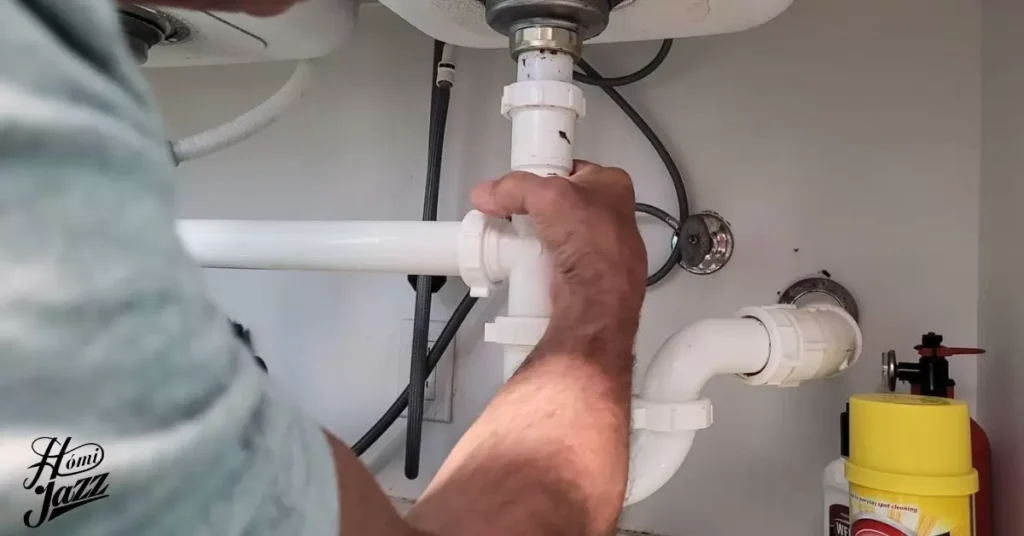Finding a leak underneath your kitchen sink can be concerning. Beyond the inconvenience, it poses potential damage to your home and water wastage. Understanding the causes and solutions for this issue is essential for maintaining a functional and efficient kitchen environment.
Picture this: you step into your kitchen, only to find a small puddle forming under the sink. The mystery of why your kitchen sink is leaking underneath unfolds like a detective story, with hidden culprits and unexpected twists waiting to be uncovered. Let’s dive beneath the surface to reveal the secrets behind this household conundrum.
Kitchen sink leaks underneath can stem from loose connections, worn-out seals, or corroded pipes. Identifying the issue promptly helps prevent water damage.
Here are some points outlining the possible ways that where your kitchen sink might be leaking underneath:
Leak from Drain Under Sink

A leak from the drain under your sink can be a frustrating and messy issue to deal with. Typically, this type of leak is caused by a faulty connection between the drainpipe and the sink basin, worn-out seals or gaskets, or corrosion of the pipes.
Over time, these components can deteriorate due to regular use, exposure to water, and other environmental factors, leading to leaks that manifest as drips or puddles under the sink. To address a leak from the drain under your sink, start by identifying the source of the leak. Check the connections between the drainpipe and the sink basin for any signs of looseness or damage. Tighten any loose connections and replace any worn-out seals or gaskets.
Related Post: WHAT SIZE DRAIN PIPE FOR KITCHEN SINK
Identifying The Source Of The Leak
Identifying the source of the leak under the sink is crucial for effective repairs. Start by visually inspecting the pipes and connections for any signs of moisture or dripping water. Look for evidence of corrosion, loose fittings, or damaged seals to pinpoint the exact location of the leak.
Leak from U-bend Under Sink
A leak from the U-bend under your sink is a common plumbing issue that can lead to water damage and mold growth if left untreated. The U-bend, also known as a P-trap, is a curved pipe beneath the sink designed to trap water and prevent sewer gases from entering your home.
Leaks in the U-bend can occur due to loose connections, corrosion, or damage to the pipe. To address a leak from the U-bend under your sink, start by identifying the source of the leak. Check the connections between the U-bend and the adjoining pipes for any signs of looseness or damage.
Tighten any loose connections with a wrench and replace any damaged or corroded sections of the pipe. Additionally, ensure that the U-bend is properly aligned and securely attached to the adjoining pipes to prevent future leaks. Regular inspection and maintenance of your plumbing system can help prevent leaks from the U-bend and ensure the continued functionality of your sink.
The kitchen sink leaking around the edges

When your kitchen sink is leaking around the edges, it’s usually due to deteriorated caulking or sealing material. Over time, the caulking that seals the edges of the sink to the countertop can wear away or become damaged, allowing water to seep through. This can result in water pooling around the sink and potentially causing damage to the surrounding area.
To address a leak around the edges of your kitchen sink, start by inspecting the caulking or sealing material. Remove any old or damaged caulking with a putty knife and thoroughly clean the area. Then, apply a new bead of silicone caulking around the edges of the sink where it meets the countertop, ensuring a tight seal. Allow the caulking to dry completely before using the sink again.
Related Post: WHAT ARE KITCHEN CABINETS MADE OF
Kitchen sink leaking from top
When your kitchen sink is leaking from the top, it’s often a result of a damaged or faulty faucet or sink fixture. The leak may occur where the faucet connects to the sink or where the handles or spout are attached. This can be due to worn-out gaskets, loose connections, or cracks in the fixture.
To address a leak from the top of your kitchen sink, start by identifying the source of the leak. Inspect the faucet and sink fixture for any visible signs of damage or deterioration. Tighten any loose connections with a wrench and replace any worn-out gaskets or seals.
How to fix a leak under the sink

A leaking sink in the kitchen can lead to water damage and mold growth if not addressed promptly. Identify the source of the leak, such as loose connections or worn-out seals, and fix it to prevent further issues. Regular maintenance and inspections can help prevent leaks and ensure a functional kitchen environment.
Here are the steps to fix a leak under the sink, broken down into points:
Identify the Source of the Leak
- Inspect the area under the sink visually to determine where the leak is originating.
- Look for dripping water, moisture buildup, or signs of corrosion on the pipes and connections.
Turn Off the Water Supply
- Locate the shut-off valves under the sink or at the main water supply and turn them off to prevent water flow.
- Open the faucet to drain any remaining water from the pipes.
Inspect and Tighten Connections
- Check all connections, including those between the sink basin, drain pipes, and water supply lines.
- Use a wrench to tighten any loose fittings or connections, but be careful not to overtighten and risk damaging the pipes.
Repair or Replace Damaged Pipes
- If the leak is coming from a damaged or corroded pipe, assess the extent of the damage.
- Repair small leaks with epoxy putty or pipe repair tape, or replace the affected section of the pipe if necessary.
Apply Pipe Sealant or Plumber’s Tape
- Use pipe sealant or plumber’s tape on threaded connections to help create a secure and leak-free seal.
- Apply a thin, even layer of sealant or tape to the threads before reconnecting the pipes.
Clean Up and Monitor
- Wipe down the area under the sink to remove any excess water or debris.
- Monitor the repaired area over the next few days to ensure that the leak has been fully resolved and no further issues arise.
Frequently Asked Questions
Why is my sink leaking from the bottom?
Your sink may be leaking from the bottom due to worn-out seals or gaskets, loose connections, or corrosion of the pipes underneath.
Why is my faucet leaking under the sink?
A faucet may leak under the sink due to loose connections, worn-out seals or gaskets, or cracks in the faucet assembly.
How do I fix a small leak under my bathroom sink?
To fix a small leak under your bathroom sink, identify the source of the leak, tighten any loose connections, replace worn-out seals or gaskets, and repair or replace damaged pipes if necessary.
Why is my kitchen sink pipe leaking under the sink?
A kitchen sink pipe may be leaking under the sink due to loose connections, corrosion of the pipes, or damage to the pipe fittings.
Why is my kitchen sink pipe leaking under the sink?
Your kitchen sink pipe may be leaking under the sink due to loose connections, corrosion of the pipes, or damage to the pipe fittings.
Conclusion
Discovering a leak underneath your kitchen sink can be a cause for concern, but understanding the potential reasons behind it is the first step toward resolving the issue. Whether it’s loose connections, worn-out seals, or corroded pipes, addressing the root cause of the leak is essential to prevent further damage and ensure the functionality of your kitchen sink.
Regular maintenance, such as inspecting connections and replacing worn-out components, can help prevent leaks from occurring in the future. By staying vigilant and proactive, you can maintain a dry and efficient kitchen environment. Remember, if you encounter difficulties or the leak persists, seeking professional assistance from a plumber is always a viable option to ensure a thorough and lasting solution.

Howdy is behind this home blog, sharing personal stories, thoughts, and insights from daily life. I can dedicated to bringing you the latest trends, expert advice, and creative ideas to make your home the sanctuary you’ve always dreamed of. Whether you’re looking for DIY tips, home decor inspiration, home loans, rentals or renovations.







